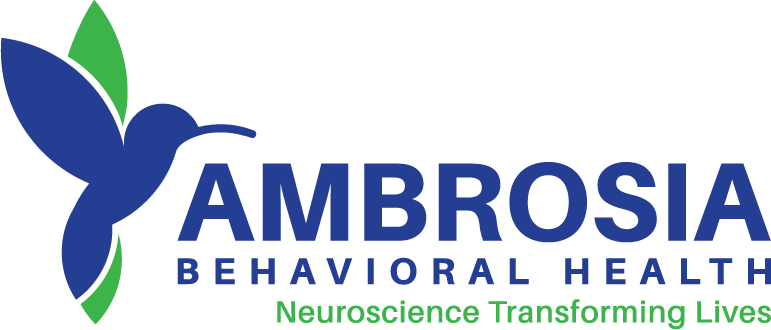South Florida Detox Center
One of the roadblocks to recovery for individuals who need detox for substance abuse is the concern about withdrawal symptoms. Midwest Detox at Ambrosia in West Palm Beach, FL specializes in treating drug and alcohol withdrawal symptoms at our South Florida detox center.
Not everyone needs medical detox. After you explain what’s going on, we’ll make a personal recommendation. With alcohol or benzo abuse (Xanax, Klonopin, Valium, etc.), you will need medical detox because withdrawal symptoms can be deadly.
Typically lasting 3-10 days, the beginning is the most intense. You don’t have to have the drugs all the way out of your system to move on, but you need to feel good enough to focus on therapy.

Florida Addiction Statistics
In the state of Florida:
Benefits of South Florida Detox Center
Highly skilled medical supervision
Safe, comfortable, and medically supervised detoxification is the best way to quit using drugs or alcohol and begin your journey of recovery. Our clinical team uses pharmaceutical therapies carefully to minimize withdrawal symptoms and ease you into detoxification. Our physicians will prescribe non-habit-forming, non-sedative drugs where possible, such as Suboxone, Librium, and Serax.
A plan for life after detox
Our credentialed clinicians work in tandem with care providers from local and out-of-state inpatient and outpatient treatment programs. Our goal is to develop a plan for each client that addresses the full continuum of care, taking into consideration each client’s unique needs.

How Detox Helps Withdrawal
Detox is not generally considered a stand-alone treatment, rather it is the first step in addiction treatment. The process involves:
- Assessing the addict, to determine the best course of treatment
- Preparing the addict for detoxification
- Getting support from the addict’s friends and family
- Preparing the addict for treatment after detox
The Process of Withdrawal
Withdrawing from drugs and alcohol can be a difficult process. Addiction creates a physical dependency, and the body and brain need to relearn how to function without intoxicants. Knowing what to expect when you withdraw at a West Palm Beach detox center can help you prepare for the detox and addiction recovery process.
Not everyone will experience alcohol withdrawal the same way. Symptoms will vary depending on a number of factors, including how much alcohol has been consumed and for how long. Symptoms can occur within hours of the last drink and may last several days. The first stages of withdrawal usually occur in three stages:
- 1st Stage (6-12 hours): Headaches, nausea, anxiety, upset stomach, and insomnia
- 2nd Stage (12-48 hours): Symptoms may intensify and may also include seizures and hallucinations.
- 3rd Stage (48-72 hours): Acute withdrawal symptoms may occur, and include fevers, sweating, chills, rapid heartbeat, high blood pressure, confusion, delirium tremens (DTs), and hallucinations.
For individuals who have struggled with alcohol use disorder for some time, there is an increased risk of more dangerous side effects, including alcohol withdrawal syndrome (AWS). AWS is potentially life-threatening, which is why individuals at risk of alcohol withdrawal syndrome should enter into detox.
Codeine is a member of the opioid family that is used to treat mild to moderate pain. Like other opiate drugs, it can be highly addictive even when taken as a combination drug, like Tylenol with codeine. As with other opioid drugs, withdrawal symptoms can begin within hours of the last dose and can last up to a week or longer, depending on the length of use.
- Early withdrawal symptoms: irritability, runny nose, watering eyes, muscle aches, fever, rapid heartbeat, yawning, and trouble sleeping.
- Later withdrawal symptoms: stomach upset, gastrointestinal issues, chills, loss of appetite, nausea, and vomiting.
- Advanced withdrawal symptoms: may include hallucinations, elevated blood pressure, and difficulty breathing.
Detoxing from most opioid addictions should be done under a doctor’s supervision, to ensure that there are no adverse side effects during the withdrawal process.
Cocaine is a stimulant drug that induces feelings of euphoria and excitement. It is often used in conjunction with other drugs, like alcohol, because it makes people feel alert and sociable. Prolonged cocaine use can have a detrimental effect on a person’s body and mental health, including:
- Gastrointestinal distress
- Irregular heartbeat
- Heart attacks
- Seizures
- Stroke
- Coma
Withdrawing from cocaine is primarily psychological, rather than physical, and can last from several hours to several days. However, addictive cravings may persist for weeks or months without proper treatment. Withdrawal symptoms can occur as quickly as an hour after last using.
Physical symptoms of acute cocaine withdrawal include:
- Chills
- Tremors
- Muscle aches
- Nerve pain
- Increased appetite
- Sexual dysfunction
Psychological symptoms of acute cocaine withdrawal include:
- Difficulty concentrating
- Irritability
- Restlessness
- Memory lapses
- Slowed thinking
- Suicidal ideation
- Vivid dreams or nightmares
- Depression
- Anxiety
Fentanyl is a highly potent synthetic opioid that is even more powerful than morphine or heroin. It is used in medical settings to treat chronic pain or after certain surgical procedures. Because it is relatively inexpensive to produce, drug cartels will often cut heroin with fentanyl.
Fentanyl is incredibly addictive, which may exacerbate withdrawal symptoms. Additionally, fentanyl’s potency makes it potentially lethal — even with just a small dose. Symptoms of opioid withdrawal begin between 12-30 hours after your last dose and can last for several days. Symptoms include:
- Early withdrawal symptoms: irritability, runny nose, watering eyes, muscle aches, fever, rapid heartbeat, yawning, and trouble sleeping.
- Later withdrawal symptoms: stomach upset, gastrointestinal issues, chills, loss of appetite, nausea and vomiting.
- Advanced withdrawal symptoms: may include hallucinations, elevated blood pressure, and difficulty breathing, and drug cravings.
Because of its particularly potent and highly addictive make-up, you should never attempt to stop using fentanyl cold turkey. Doing so is potentially life-threatening. Instead, you should seek treatment from qualified medical professionals at our West Palm Beach detox center to help you get through withdrawal and detox.
Heroin is a highly addictive opioid drug that acts as a central nervous system suppressant. When someone uses heroin, the central nervous system slows down, which decreases heart rate and respiration. Additionally, heroin attaches to opioid receptors in the brain, releasing feel-good chemicals. This is one of many reasons that heroin is particularly addictive.
Heroin withdrawal symptoms generally start between 6-12 hours after the last dose and peak around 1-3 days. However, withdrawal symptoms can last for up to a week or longer — especially drug cravings. For individuals who have used heroin for some time, acute withdrawal syndrome is a risk. Withdrawal symptoms include:
- Early withdrawal symptoms: irritability, runny nose, watering eyes, muscle aches, fever, rapid heartbeat, yawning, and insomnia.
- Later withdrawal symptoms: depression, nervousness, stomach upset, gastrointestinal issues, chills, loss of appetite, nausea, and vomiting.
- Advanced withdrawal symptoms: in addition to other withdrawal symptoms, this stage may include hallucinations, elevated blood pressure, difficulty breathing, and drug cravings.
Because of the risk of acute withdrawal syndrome that is associated with heroin addiction, it is not recommended that individuals try to kick heroin on their own. Instead, medically assisted detox and treatment are recommended for the treatment of heroin addiction.
Morphine is a non-synthetic opioid drug that is used in medical settings after surgery, and to treat chronic and severe pain. It is considered a fast-acting drug and works by changing the way the brain responds to pain. Because of its euphoric effects, it is considered highly addictive — especially with prolonged use.
As soon as morphine has stopped being effective in a person’s bloodstream, withdrawal symptoms may start, usually within 6-12 hours of the last dose, usually subsiding after a week. Symptoms progress through two stages but may vary depending on how long someone has used morphine.
Stage 1 (12-24 hours): Watering eyes, excessive yawning, sweating, chills, runny nose, and other flu-like symptoms.
Stage 2: (24-72 hours): Chills, goosebumps, high blood pressure, elevated heart rate, irritability, insomnia, restlessness, anxiety, muscle pain, gastrointestinal distress, sneezing, tremors, loss of appetite, depression, and drug cravings.
As with other opioids, it is not recommended that individuals addicted to morphine quit cold turkey. Instead medically supervised or assisted detox at our West Palm Beach detox center is recommended.
Oxycodone is a prescription opioid that is used to treat certain chronic health conditions or after certain surgical procedures. Tylenol combined with Oxycodone is also referred to by the brand name Vicodin. Because it is a member of the opioid family and acts on the opioid receptors in the brain, it is highly addictive — even if only taken for a short period of time.
How long the onset of withdrawal symptoms takes depends on the formulation of and method used to take oxycodone. Extended-release pills may take 12 hours or more to wear off, especially if swallowed. When injected or snorted, the effects of oxycodone are felt more quickly, but also wear off relatively fast.
Withdrawal symptoms usually start within 8-12 hours after last taking oxycodone and peak around 72 hours. Symptoms can last for up to a week or longer, and may include:
- Agitation
- Depression
- Irritability
- Anxiety
- Body aches
- Chills
- Fever
- Gastrointestinal upset
- Irregular heartbeat
- High blood pressure
Because oxycodone is an opioid, prolonged use can lead to acute withdrawal syndrome when someone attempts to quit. It is especially important for anyone that regularly abused Vicodin to undergo medically supervised detox, so potential physical side effects can be monitored.
Xanax is a prescription anti-anxiety medication that is often used to treat symptoms of anxiety disorders, including panic attacks. It is a central nervous system depressant that slows down the heart rate and lowers blood pressure and body temperature. Xanax is considered highly addictive because, in addition to working on suppressing central nervous system responses, it also releases dopamine in the brain.
Withdrawal symptoms will vary, depending on how long the Xanax was used, and usually start within several hours after stopping the drug. Symptoms will peak between 1-4 days but can last for several days or weeks. Symptoms include:
- Agitation
- Nervousness
- Headaches
- Blurred vision
- Light sensitivity
- Muscle pain
- Gastrointestinal distress
- Loss of appetite
- Insomnia
- Numb fingers
- Paranoia
- Panic attacks
- Anxiety
- Sweating
- Heart palpitations



